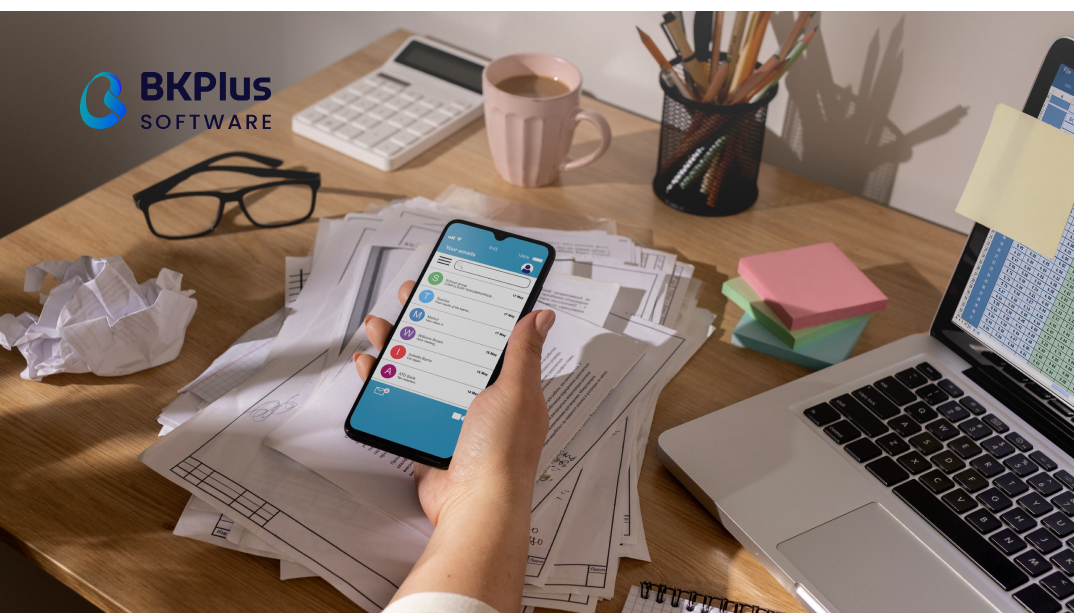According to Grand View Research, the global app market reached a volume of $288.98 billion dollars in 2023. And it is expected to reach $567.19 billion by 2030. So getting involved and developing a mobile app can benefit your business.
However, developing and launching a mobile app can be challenging for many businesses and entrepreneurs. The cost of a mobile app can vary depending on its complexity and functionality.
In this article, we’ll give you 9 tips that can help you reduce the cost of your mobile app by up to 50% without compromising on quality or functionality. Whether you’re a startup looking to create your first app or a business looking to expand your mobile offering, these tips will help you create an app that stands out from the competition and leaves a lasting impression on your customers.
What Determines the Cost of Building a Mobile App?
The cost of developing a mobile app can vary greatly and depends on several factors, such as the app’s complexity, the features required, the development team you choose, and the location of the app development company. However, there are many things you can do to reduce your app development costs without compromising on quality.
While every app is unique, some key factors consistently affect costs, such as:
- App complexity: the more complex your app is, the more expensive it will be to develop. This includes the number of features, the design of the app, and the amount of data that needs to be stored and processed.
- Development team: The cost of your development team depends on their experience, location, and hourly rate. You can save money by hiring a team of developers from a country with a lower cost of living or by working with a freelance developer.
- App development platform: The platform you choose to develop your app will also affect the cost. Native apps that are developed for a specific platform, such as iOS or Android, are usually more expensive than cross-platform apps that can be developed for multiple platforms.
- App maintenance: Once your app is developed, you need to factor in the cost of ongoing maintenance and support. This includes fixing bugs, updating the app with new features, and ensuring that the app is compatible with new versions of the operating system.
9 Tips for Cutting Your Mobile Application Costs By 50%
The cost of mobile app development varies depending on the project type, needs and requirements, features, developer experience, and the type of operating system. The costs per phase also vary. The most important phase and aspect is the development phase, which requires the highest investment. Finally, quality assurance is the most important factor for the successful development of the product.
On the contrary, every entrepreneur is looking for a cost-effective way to save a lot of their money. However, it is important to carefully plan and reduce the unnecessary costs. Therefore, here are the tips on how to save costs while developing your mobile app.
1. Choose MVP to Inaugurate Your Launch
For businesses seeking to optimize their app development budget, a Minimum Viable Product (MVP) is a strategic cornerstone. This approach prioritizes core features so you can quickly launch a functional app iteration and gather valuable user feedback. This leads directly to cost savings throughout the development cycle.
In fact, by focusing on the essential features, an MVP requires a smaller development team and less development time, resulting in significantly lower upfront costs compared to a full-scale app. In addition, the lean nature of an MVP enables faster development and time to market, allowing you to gather user data and iterate quickly.
On the other hand, the real user data gained through the use of the MVP informs future development decisions. This data-driven approach ensures that resources are used for functions with demonstrably high utility value. This way, you avoid the risk of investing in functions that are not well received by your target group.
2. Make use of Open Source App Development Frameworks
Open-source frameworks offer a convincing solution as they provide ready-made functionalities and tools. This means you don’t have to reinvent the wheel and your development team can focus on the core features and functionalities that make your application stand out. Consequently, the use of open-source frameworks can significantly streamline the development process, resulting in lower costs and a shorter time to market.

Besides, pre-built components and functionalities significantly reduce development time, resulting in cost savings. In addition, many open-source frameworks have large and active developer communities that provide valuable support and readily available solutions, minimizing troubleshooting time and associated costs.
3. Use Readymade Templates
For mobile applications where speed to market and budget-conscious development are paramount, pre-built designed app templates can make all the difference. These off-the-shelf templates provide a solid foundation, already equipped with key functionalities and layouts, so development teams can hit the ground running.
This approach significantly shortens the development time compared to a completely new development. By using existing, well-tested code, developers can focus on customizing the template to meet the needs of your specific application and integrating unique features. This results in a faster time-to-market and an overall more cost-effective development process.
4. Focus on Essential Features
In the pursuit of a feature-rich app, it’s crucial to strike a balance between ease of use and development efficiency. While extensive functionalities may seem tempting, a cluttered interface can hurt user adoption and drive up development costs significantly.
Thanks to prioritizing core functionalities that ensure secure transactions and a seamless user experience, you can achieve a streamlined development process that reduces time and resources.
5. Troubleshooting Regularly
Within the app development lifecycle, robust debugging practices are critical to cost optimization. While it may seem counterintuitive at first glance, consistent debugging can demonstrably reduce your app development costs.
Indeed addressing issues promptly during development is much more cost-effective to address issues immediately during development than to fix them later. Minor issues that are left unfixed can grow into major roadblocks that require extensive resources to resolve.
Additionally, regular debugging significantly reduces the need for rework, a notorious cost eater in software development. Proactively identifying bugs prevents the need to rework entire sections of code, saving valuable development time and resources.
6. Cross-platform Development
For applications that target a large number of users on multiple operating systems, developing native applications for each platform can become a significant cost burden. Cross-platform development offers a strategic approach to reducing app development costs by using a single code base that can be deployed on iOS, Android, and potentially Windows.
Therefore, when developing a single codebase for multiple platforms, development time is significantly reduced compared to creating separate native apps. A unified codebase minimizes the need for dedicated developer resources for each platform, resulting in lower overall development costs.
7. Simplicity at its Best for UI/UX
Intuitive interfaces not only improve the user experience (UX) for your target audience but have also been proven to reduce development time and associated costs. Overly complex designs with complicated structures can put off new users, lead to confusion, and hinder app adoption.

Your business should pay more attention to clean layouts and clear navigation so you can achieve a more streamlined development process, resulting in significant cost savings. In addition, this user-centric approach promotes a positive UX, which translates into improved user engagement and retention, ultimately impacting your bottom line.
8. Outsourcing Mobile App Development
Highly skilled in-house mobile application developers can deliver exceptional technical solutions. However, building and maintaining your development team can put a significant strain on your budget.
Outsourcing app development offers a compelling alternative. It provides access to a global talent pool with diverse skill sets, often at a more competitive cost structure. This allows you to secure the expertise you need for your project without incurring the cost of building an in-house team.
9. Team Optimization
Effective staffing of your app development project is critical to controlling costs. Leverage your team’s strengths by strategically assigning tasks based on each member’s proven skills and experience. This optimized approach ensures that you get the most out of your internal resources. You may need to outsource fewer tasks or hire additional developers for tasks that can be done in-house.
Furthermore, maintaining clear communication and providing constructive feedback throughout the development process can streamline development and potentially reduce rework and associated costs due to unmet requirements.
Conclusion
Knowing the tips and tricks to save on mobile app development costs, you should develop a plan and strategies before developing your app. Therefore, hiring a professional development team can help you keep costs down and develop apps according to your budget.
At BKPlus Software, we have a team of experienced developers who can help you develop high-quality and cost-effective mobile apps that meet your business needs. Whether you need a native or hybrid app, our team is equipped with the latest tools and technologies to deliver the best results.



